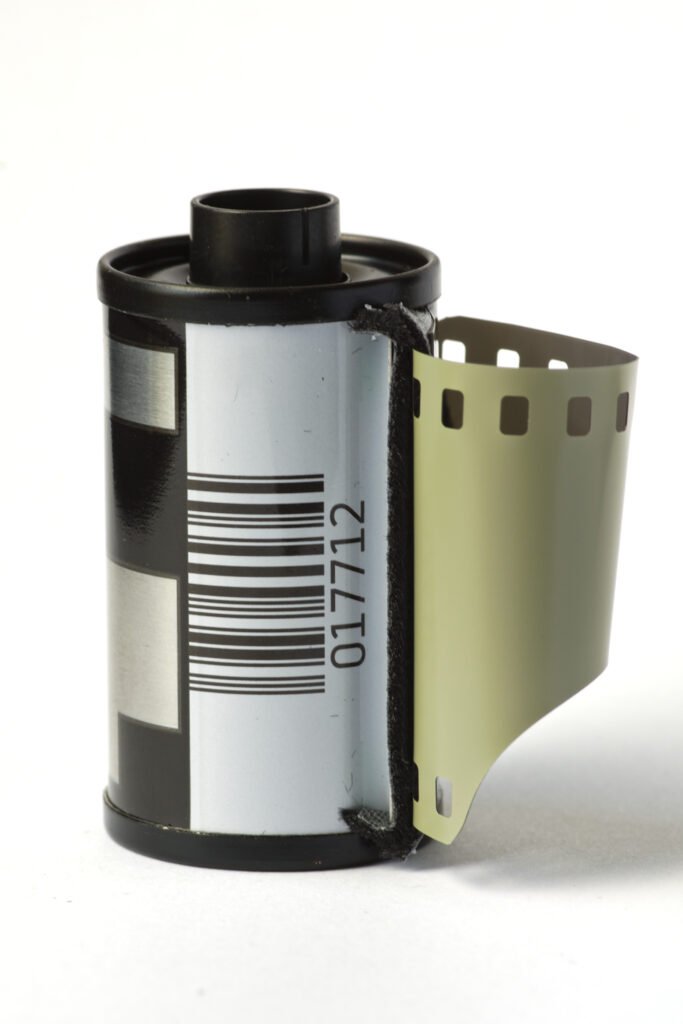Introduction to Barcodes
Barcodes are a standardized way of representing data in a machine-readable format, primarily consisting of a series of parallel lines of varying widths or patterns. They serve a significant purpose in a variety of industries, enabling the efficient tracking and management of products. The most common barcode formats include UPC, EAN, and QR codes, each designed to store different types of information, such as product identification numbers and prices.
The primary function of barcodes is to simplify the process of data entry and inventory management. When a barcode is scanned using a barcode reader or a smartphone camera, the encoded information is instantly retrieved, allowing for immediate access to product details. This speed and accuracy in information retrieval are invaluable, particularly in retail environments where quick checkouts are a priority. Furthermore, barcodes play a critical role in supply chain management, as they facilitate the tracking of goods from manufacturers to distributors and finally to retailers.
In addition to their utility in tracking and inventory management, barcodes contribute to minimizing human errors often associated with manual data entry. By automating the process, businesses can enhance operational efficiency and ensure accurate inventory records. Moreover, many inventory management systems now integrate barcode technology, allowing for real-time updates and increasing the overall visibility of supply chain operations.
Overall, barcodes are an indispensable element in modern commerce, playing a crucial role across various sectors, including retail, logistics, healthcare, and manufacturing. Understanding the fundamental aspects of barcodes lays the groundwork for a deeper exploration of their lifespan and the factors that may influence their expiration.
The Lifespan of Barcodes
Barcodes, which serve as essential tools for inventory management and tracking, exhibit varying lifespans based on several factors. The validity of a barcode largely depends on its type, use case, and the environment in which it is deployed. Generally, barcodes can be categorized into two primary types: 1D and 2D barcodes. Each type carries distinct characteristics that influence its longevity.
1D barcodes, such as Universal Product Codes (UPC), are linear and typically consist of a series of parallel lines and spaces. These barcodes have a reliable lifespan, lasting several years if maintained properly. However, their longevity can be compromised by inadequate printing quality or damage during the product’s lifecycle. Environmental conditions, such as exposure to moisture, heat, or direct sunlight, can also significantly shorten the lifespan of 1D barcodes.
On the other hand, 2D barcodes, like Quick Response (QR) codes, possess more complexity, allowing them to store a substantial amount of information in a compact space. Generally, 2D barcodes can endure a longer duration compared to their 1D counterparts, mainly because they can still be scanned accurately even when partially damaged. Nevertheless, the lifespan of 2D barcodes is not immune to the surrounding conditions and maintenance practices.
Factors such as the material on which the barcode is printed, the quality of the printing process, and the end user’s handling of the product can all critically influence how long a barcode remains functional. To maximize the lifespan of barcodes, it is crucial to implement best practices, including regular checks for readability and ensuring that they are printed on durable materials suitable for their intended use. By understanding these aspects, businesses can effectively manage barcodes and ensure their utility over an extended period.
Reasons for Barcode Expiration
Barcodes, while integral to various industries, can become expired for several compelling reasons. One of the most notable factors is the alteration of product information. When a product undergoes changes such as a modification in ingredients, packaging design, or branding, the existing barcode may no longer be applicable. This is particularly true for products in dynamic sectors such as food and pharmaceuticals, where labels need to reflect accurate, up-to-date information to comply with regulations and ensure consumer safety.
Another significant reason for barcode expiration is system upgrades. Many businesses periodically update their inventory management systems and point-of-sale technologies to enhance efficiency or meet new regulatory demands. During such upgrades, older barcode formats may become obsolete, necessitating the adoption of newer standards. The transition to better technology can also integrate advanced tracking mechanisms, which may require a new set of barcodes that align with modern software capabilities.
Additionally, technological advancements play a critical role in determining barcode relevance. The movement from traditional physical barcodes to digital solutions, such as QR codes and RFID (Radio-Frequency Identification) tags, signifies a shift in the way products are tracked and identified. This transition can render older barcode systems ineffective, leading to their eventual expiration as businesses adopt more efficient tracking technologies. The integration of digital barcodes is becoming more prevalent, allowing for a seamless flow of information, increased data accuracy, and improved inventory management.
In conclusion, the reasons for barcode expiration are multifaceted, encompassing product information changes, system upgrades, and the inevitable march of technological progress. Understanding these factors is crucial for businesses to maintain accurate and relevant inventory systems.
Regulatory and Compliance Factors
In the realm of barcode management, regulatory and compliance factors play a crucial role in determining the lifespan and validity of barcodes. One of the most significant compliance frameworks is established by GS1, a global organization that sets standards for business communication. GS1 standards specifically dictate the format, data structures, and usage of barcodes, ensuring uniformity and interoperability across various sectors. Adhering to these standards is essential for businesses, as non-compliance can lead to inefficiencies and miscommunications throughout supply chains.
Furthermore, different industries may be governed by specific regulations that influence barcode practices. For instance, in the healthcare sector, strict adherence to FDA regulations is necessary, as accurate labeling through barcodes is vital for ensuring patient safety and effective inventory management. Similarly, in the retail sector, compliance with GS1 standards assists businesses in streamlining inventory processes, thus enhancing customer satisfaction through better availability of products.
Organizations must also keep abreast of any updates or changes to these regulations. Failure to do so can result in expired barcodes that may not conform to current standards, leading to potential errors in product identification, tracking, and overall inventory handling. This is particularly important in international trade, where countries may have different regulatory requirements for barcode usage.
In addition to complying with external regulations, businesses should also establish internal barcode management protocols. Such protocols may include regular audits and training for staff regarding the importance of maintaining barcode standards. By understanding and adhering to industry regulations, organizations can ensure that their barcodes remain effective and compliant, thereby supporting operational efficiency and regulatory integrity.
Managing Barcode Expiration
Effective management of barcode expiration is essential for maintaining inventory accuracy and ensuring that businesses operate smoothly. One of the primary strategies to manage barcode expiration effectively is through comprehensive inventory tracking. Businesses should implement systems that monitor inventory levels, associated barcodes, and their expiration dates. By utilizing inventory management software that integrates with barcode systems, organizations can automate this process, reducing the risk of human error and ensuring that any expired barcodes are promptly identified and removed from circulation.
Regular audits are another critical component of barcode management. Conducting routine scans and checking the validity of all barcodes in use provides valuable insights into the current state of inventory. These audits should occur at scheduled intervals or when significant replenishments take place. This practice enables businesses to spot any discrepancies between physical inventory and recorded barcodes promptly. Additionally, audits help in identifying barcodes that may be nearing expiration, allowing the team to take necessary actions before they become outdated.
Furthermore, employing a robust data management system is paramount for maintaining valid barcode usage. Such systems should be designed to track not only the expiration dates of barcodes but also other pertinent information, such as product life cycles and restocking timelines. Leveraging advanced data analytics can help organizations predict when certain products will require barcodes to be renewed or eliminated altogether. By effectively managing this data, businesses can optimize their inventory management processes, minimize waste, and ensure compliance with industry standards.
In summary, a combination of diligent inventory tracking, regular audits, and effective data management systems can greatly enhance an organization’s ability to manage barcode expiration. By taking these steps, businesses can maintain control over their inventory, mitigate the risks associated with expired barcodes, and ultimately preserve operational efficiency.
Impact of Expired Barcodes on Businesses
Expired barcodes can lead to a myriad of complications for businesses, affecting operations in several significant ways. One of the primary concerns associated with outdated barcodes is inaccurate inventory management. When barcodes expire, the associated data may no longer provide accurate information about stock levels or product information, creating discrepancies that can disrupt the supply chain. This can lead to overstocking or understocking situations, complicating the ability to meet customer demand efficiently.
Furthermore, businesses rely heavily on barcodes for order fulfillment and tracking. An expired barcode can result in delays or errors in processing orders, as the system might fail to recognize the product or automatically retrieve its details. Such inefficiencies can hinder the ability to deliver products on time, thereby diminishing customer satisfaction. In the increasingly competitive marketplace, maintaining a reliable and seamless customer experience is paramount. Consequently, even a minor lapse in barcode accuracy can lead to lost customers and negative reviews, ultimately impacting brand reputation.
Financial ramifications are another critical area of concern when considering the impact of expired barcodes. Businesses often incur additional costs associated with rectifying inventory discrepancies and managing customer complaints. The need for manual intervention to resolve barcode-related issues can also lead to increased labor costs and operational inefficiencies. Over time, these financial burdens can accumulate, detracting from a company’s profitability. Therefore, it becomes imperative for organizations to prioritize barcode management and ensure that all systems are updated regularly to mitigate these risks.
In conclusion, the significance of maintaining current barcodes cannot be overstated. Staying vigilant about barcode management enables businesses to operate smoothly, uphold customer satisfaction, and safeguard their financial interests.
Best Practices for Barcode Management
Effective barcode management is crucial for ensuring accuracy and minimizing expiration risks associated with product labeling and inventory tracking. Implementing a systematic approach will significantly enhance the longevity and reliability of barcodes. The following best practices outline key strategies for managing barcodes effectively.
First and foremost, it is essential to conduct regular reviews of barcode systems to identify any potential issues before they escalate. Frequent audits can help spot discrepancies in inventory levels, which in turn ensures that barcode data is consistently accurate. By scheduling these audits on a monthly or quarterly basis, organizations can proactively address problems and streamline their operations.
Another vital aspect of barcode management is keeping systems up to date. It is important to regularly evaluate software and hardware related to barcode scanning and processing. Updates to software systems enhance security, efficiency, and compatibility with evolving industry standards, which can ultimately help minimize chances of barcode expiration or errors.
Employee training plays a significant role in effective barcode management. Staff members should be well-versed in barcode scanning procedures, inventory tracking protocols, and how to utilize barcode management software. By ensuring that employees are knowledgeable about barcode operations, organizations can enhance productivity and reduce the likelihood of human errors that may lead to expired or faulty barcodes.
Implementing a comprehensive barcode management system can greatly improve overall efficiency. Such a system should encompass procedures for tracking barcode status, issuing alerts for pending expirations, and facilitating streamlined reprinting of barcodes when necessary. Automation tools can significantly reduce administrative burdens, enabling staff to focus on higher-level tasks while maintaining accurate and up-to-date inventory.
Adopting these best practices will ensure that barcodes remain efficient and effective throughout their lifespan, ultimately supporting better inventory management and reducing the risk of issues arising from barcode expiration.
Technological Advancements in Barcode Systems
The evolution of barcode technology has significantly transformed how businesses manage and track inventory, enhancing operational efficiency and accuracy. In recent years, numerous innovations have emerged that simplify the processes of barcode management and usage. One notable development is the rise of mobile scanning devices and applications, which have steadily replaced traditional, fixed scanning equipment. With smartphones and tablets equipped with advanced cameras, businesses can now utilize applications that read and interpret barcodes seamlessly. This mobility not only allows for greater flexibility in inventory management but also reduces costs associated with purchasing specialized hardware.
Moreover, the integration of smartphone technology with barcode systems provides real-time data access. Employees can instantly update inventory or product information straight from the warehouse or sales floor without needing to return to a central location. This capability is crucial for maintaining accurate records and ensuring that any changes made are reflected immediately, thereby minimizing discrepancies between physical stock and digital records.
Another significant advancement in barcode systems is the adoption of cloud-based solutions. By transitioning barcode data to cloud platforms, businesses can access their information remotely and securely. This shift allows for easier collaboration between teams and enhances the overall reliability of data due to regular updates and back-up processes. Additionally, cloud systems can host sophisticated analytics tools that help organizations monitor their inventory turnover rates, forecast trends, and make data-driven decisions.
As technology continues to advance, the future of barcode systems appears promising. Emerging trends such as augmented reality (AR) and the Internet of Things (IoT) hint at an even more integrated system, where barcodes may communicate directly with other devices, facilitating automated tracking and management. As these innovations unfold, understanding their implications for barcode management will be essential for businesses aiming to stay competitive in the evolving marketplace.
Conclusion and Future Considerations
In summary, the lifespan of a barcode is a crucial aspect of inventory management and product identification that should not be overlooked. Through this blog post, we have established that while barcodes themselves do not have an inherent expiration date, certain factors such as product lifecycle, technological advancements, and the need for accurate data management can influence their effective use. Businesses must remain vigilant in maintaining their barcode systems, ensuring they remain legible and relevant to the application they serve.
Furthermore, as technology continues to evolve, the future of barcodes looks promising with advancements such as QR codes, data matrix codes, and NFC technology gaining traction. These innovations enhance not only efficiency but also enable richer data sharing and better customer engagement. For example, the integration of barcode scanning with mobile devices offers customers instant access to product information, pricing comparisons, and reviews, creating a more informed shopping experience.
Moving forward, businesses should consider adopting a proactive approach to barcode management to adapt to these emerging trends. This includes regular audits of current barcode systems, investing in scalable printing solutions, and staying updated on new standards and practices within the industry. Additionally, training employees on the importance of barcode accuracy can lead to improved operational efficiency and customer satisfaction.
Ultimately, the future of barcodes will be shaped by both technological advancements and shifts in consumer behavior. Companies that embrace these changes and develop a strategic approach to barcode management will not only safeguard their holdings but also leverage the power of these tools to gain a competitive edge in the marketplace.
© barcodly.com- All rights reserved





